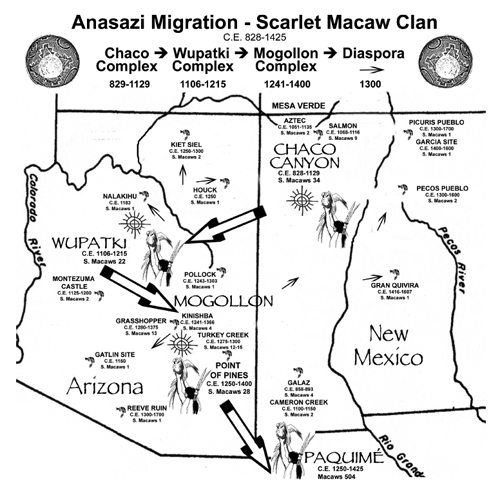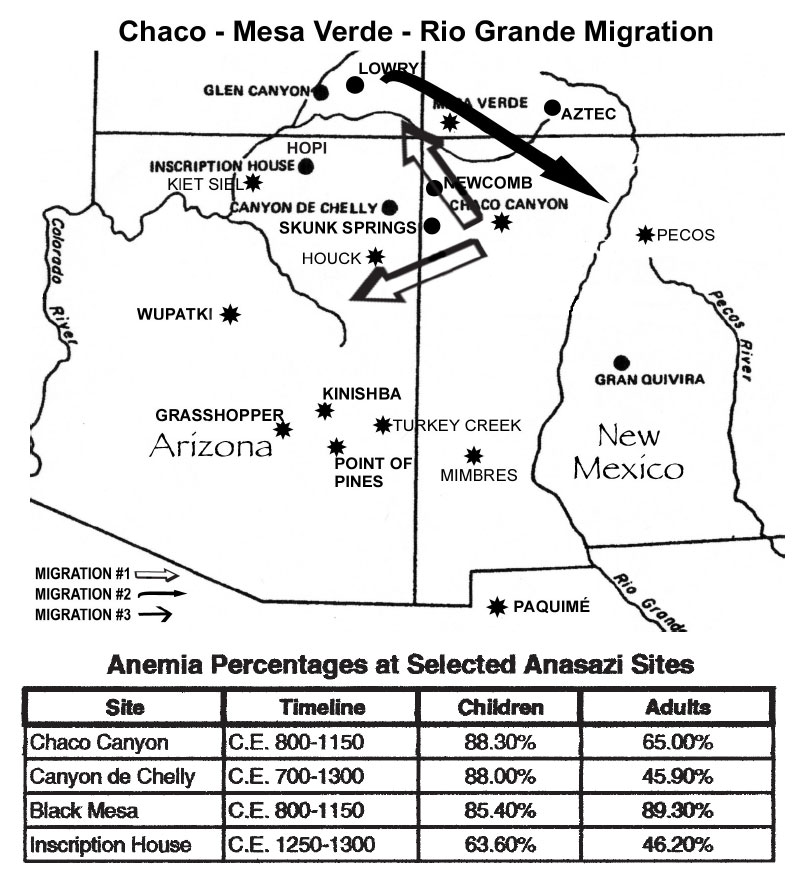These percentages are all that
is required to prompt migration. These rates of anemia
are sufficient to cause many miscarriages, mother
and infant deaths and mental/physical birth defects.
While it is not possible to predict the exact effects
of the severe iron deficiency it indicates extreme
stress on human reproduction and healthy maturation.
Deforestation, crop fertility and many other factors
have been suggested but anemia is a required single
factor causation.
This dietary deficiency cannot be generalized as “bad
diet” but rather is a specific lack of one vital mineral
with characteristics that have easily observable symptoms.
The Anasazi and others perhaps, could not have known
the specific “scientific cause.” I propose however,
that they knew what the cure was which is red blood/red
meat.
The Mayan/Aztecan fascination with blood including
human sacrifice and cannibalism can be recognized as
a recognition of the “cure for anemia.” Among the Anasazi
there is a specific time period around CE 1150 where
cannibalism took place in numerous areas and this is
perhaps a reaction to stress caused by anemia which
lead in that time period to migration.
The migration of the Scarlet Macaw Clan is well documented
on the proceeding page. The Chaco-Mesa Verde-Rio Grande
migration does not have a specific and clear marker
such as Scarlet Macaws, but, there is an observable
dateline and ceramics tradition that can indicate the
migration path. (Lexon and LeBlanc, a personal interview
October 2007.)
|

